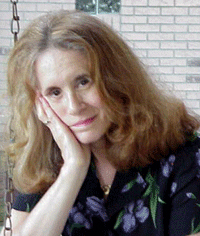Filed Under > Research/Publications
Senior Performing Artists: Engaged, Productive and Not Retired
A new study by the Research Center for Arts and Culture at TC, to be released today at Jazz at Lincoln Center's Frederick P. Rose Hall, finds that performing artists over 62 are models for aging baby boomers.
A new study by the Research Center for Arts and Culture (RCAC) at Teachers College, Columbia University, launched today at Frederick P. Rose Hall, home of Jazz at Lincoln Center, finds that aging artists are models for society – especially as the workforce changes to accommodate multiple careers and baby boomers enter the retirement generation.
A presentation about the study will take place on June 9 from 3 p.m. to 5 p.m. at the Frederick P. Rose Hall at Lincoln Center, 60th Street and Broadway, 5th Floor. Copies of the study will be available. The presentation will include Joan Jeffri, director, Research Center for Arts and Culture; the actress Olympia Dukakis; and Kate Levin, the New York City Commissioner of Cultural Affairs.
Evidence for this claim is provided in the first needs assessment of aging performing artists in the New York and Los Angeles metro areas now available in the RCAC report: STILL KICKING - Aging Performing Artists in NYC & LA Metro Areas: Information on Artists IV. The study is the first of its kind to understand how performing artists – who often reach artistic maturity and artistic satisfaction as they age – are supported and integrated within their communities, and how their network structures change over time. It complements the RCAC’s 2007 study of aging visual artists, published as ABOVE GROUND. The artists studied are actors, dancers, choreographers, musicians and singers.
To view the entire study and an executive summary, go to www.tc.edu/rcac.
Aging artists belie stereotypes: They are passionate about their work, and put the good news and bad news into it. They feel validated as artists and rank high in life satisfaction and self-esteem; 86% in NYC and 92% in LA would choose to be an artist again. Nor are aging artists isolated: More than half of them communicate daily or weekly with other artists, and more than half continue to be working artists and do not expect to “retire” until they are 90.
Unlike aging visual artists, aging performers have made significant preparations in numbers that trump the general population: 92% have a will, 77% of NYC artists and 65% of LA artists have a health proxy, and 67% NYC/66% LA artists have a power of attorney. Also unlike visual artists, performers have membership in unions.
The news is not all good. Ageism remains; performers can still work many weeks under the jurisdiction of several different unions and not qualify for health or pension benefits; and their work, unlike that of visual artists, is not often solo.
Two hundred thirty artists, ages 62-97 in New York City and 52 artists in LA were interviewed, of whom 219 in New York and 51 in Los Angeles were professional artists. The report analyzes data from these interviews in the areas of retirement, life satisfaction, social networks, income, discrimination, education, health insurance, legacy planning, creative process, careers, identity and professionalism.
Very much like his aging visual artist counterpart, a typical aging performer is 73 to 75 years old, lives alone in rent-controlled or rent stabilized housing, earns money through his art, and has no plans to leave the metro area. Educated beyond high school with a Bachelor’s and maybe a Master’s Degree and a median income of $30K, s/he belongs to a performing arts union, has health insurance, takes more artistic risks and has a deeper creative experience than when younger.
The study provides recommendations, including suggestions for performers’ unions to provide better data on their aging members, and strategies for delivering health care and pension income to members who may be ineligible, perhaps through a merger of unions. Services recommended largely by the artists themselves include resources, housing, places to network with their peers, more cultural activity in senior centers, and understanding the artist over his/her lifetime.
Published Thursday, Jun. 9, 2011
